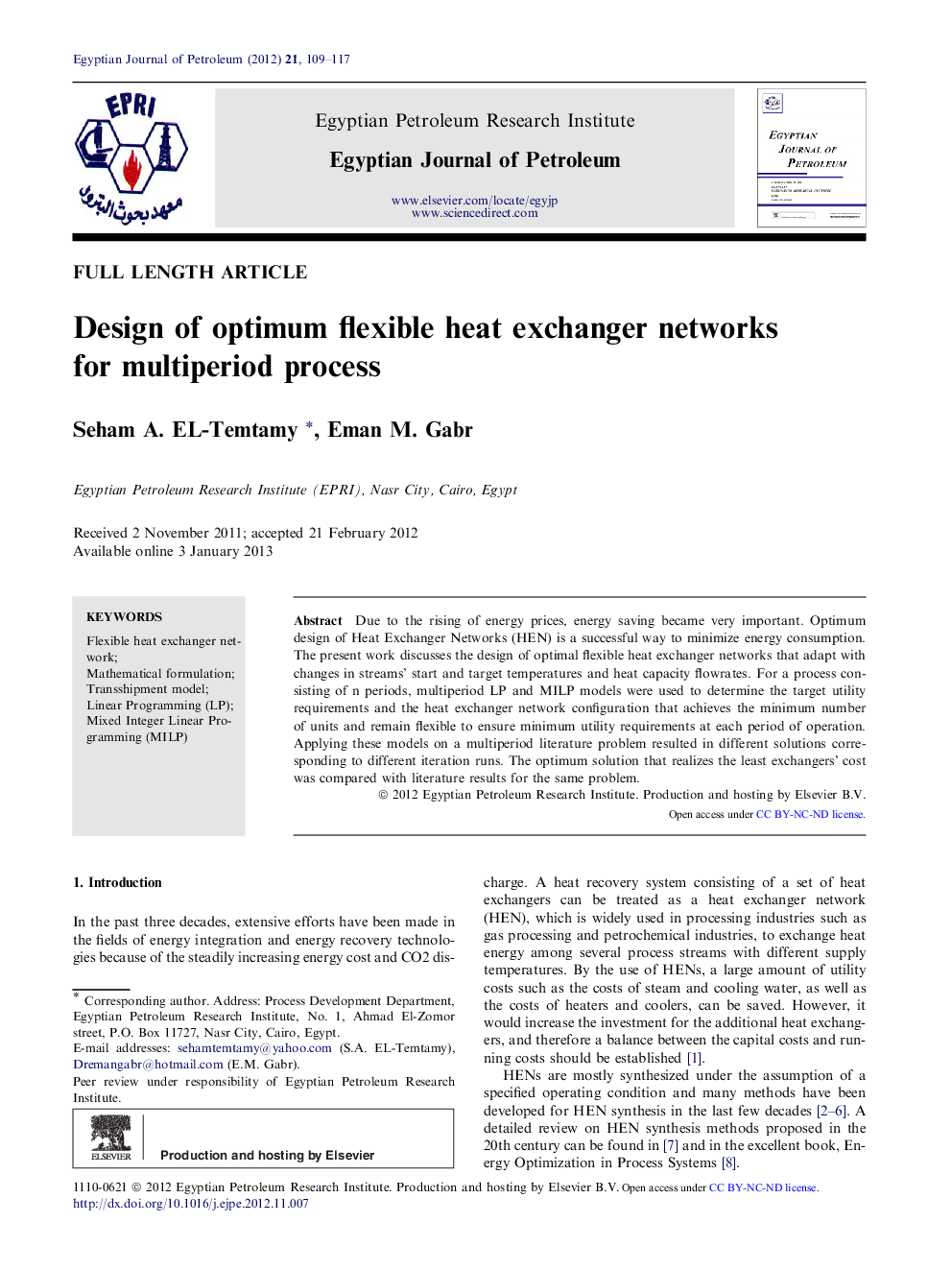| Article ID | Journal | Published Year | Pages | File Type |
|---|---|---|---|---|
| 1756906 | Egyptian Journal of Petroleum | 2012 | 9 Pages |
Due to the rising of energy prices, energy saving became very important. Optimum design of Heat Exchanger Networks (HEN) is a successful way to minimize energy consumption. The present work discusses the design of optimal flexible heat exchanger networks that adapt with changes in streams’ start and target temperatures and heat capacity flowrates. For a process consisting of n periods, multiperiod LP and MILP models were used to determine the target utility requirements and the heat exchanger network configuration that achieves the minimum number of units and remain flexible to ensure minimum utility requirements at each period of operation. Applying these models on a multiperiod literature problem resulted in different solutions corresponding to different iteration runs. The optimum solution that realizes the least exchangers’ cost was compared with literature results for the same problem.
